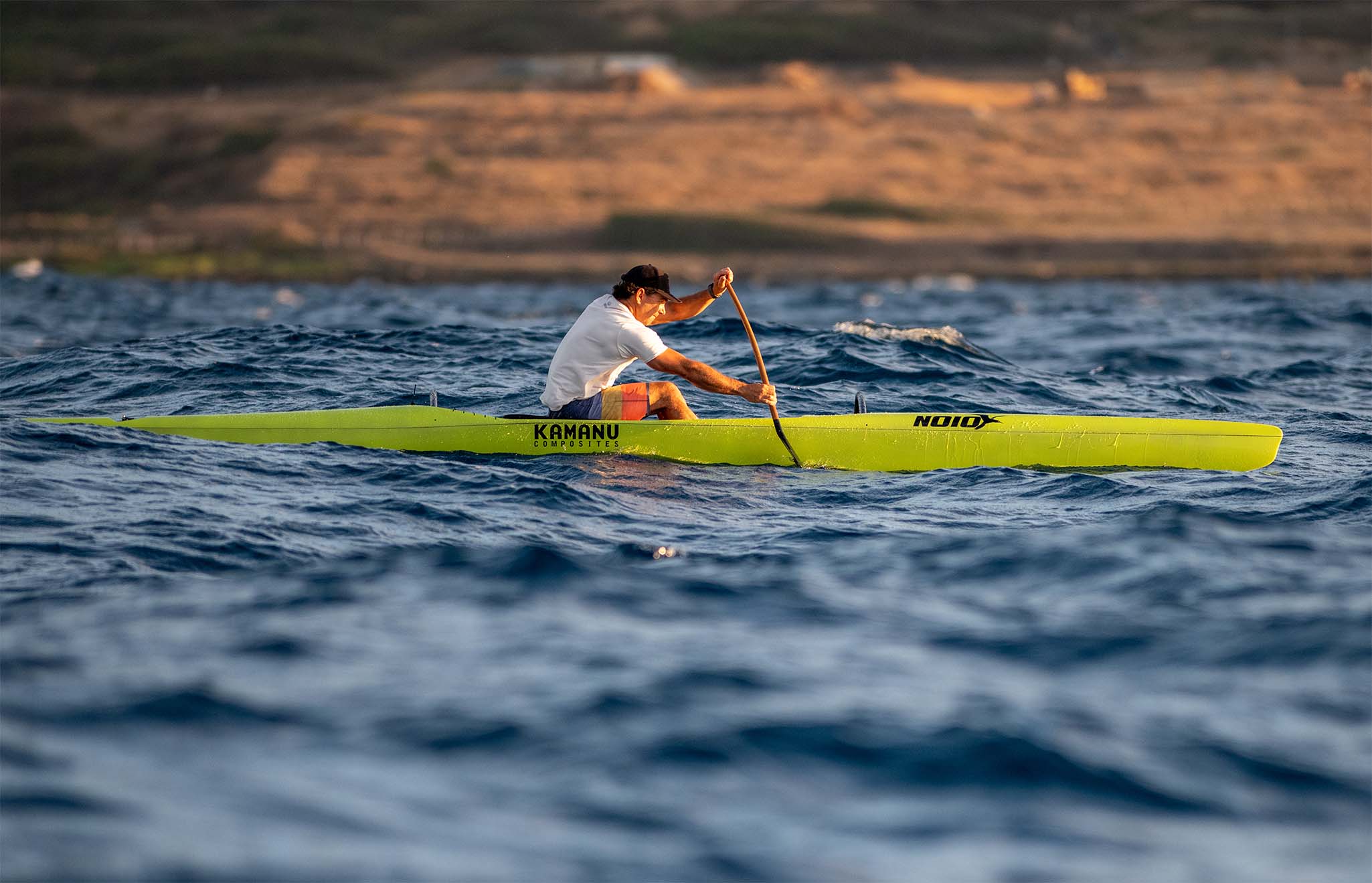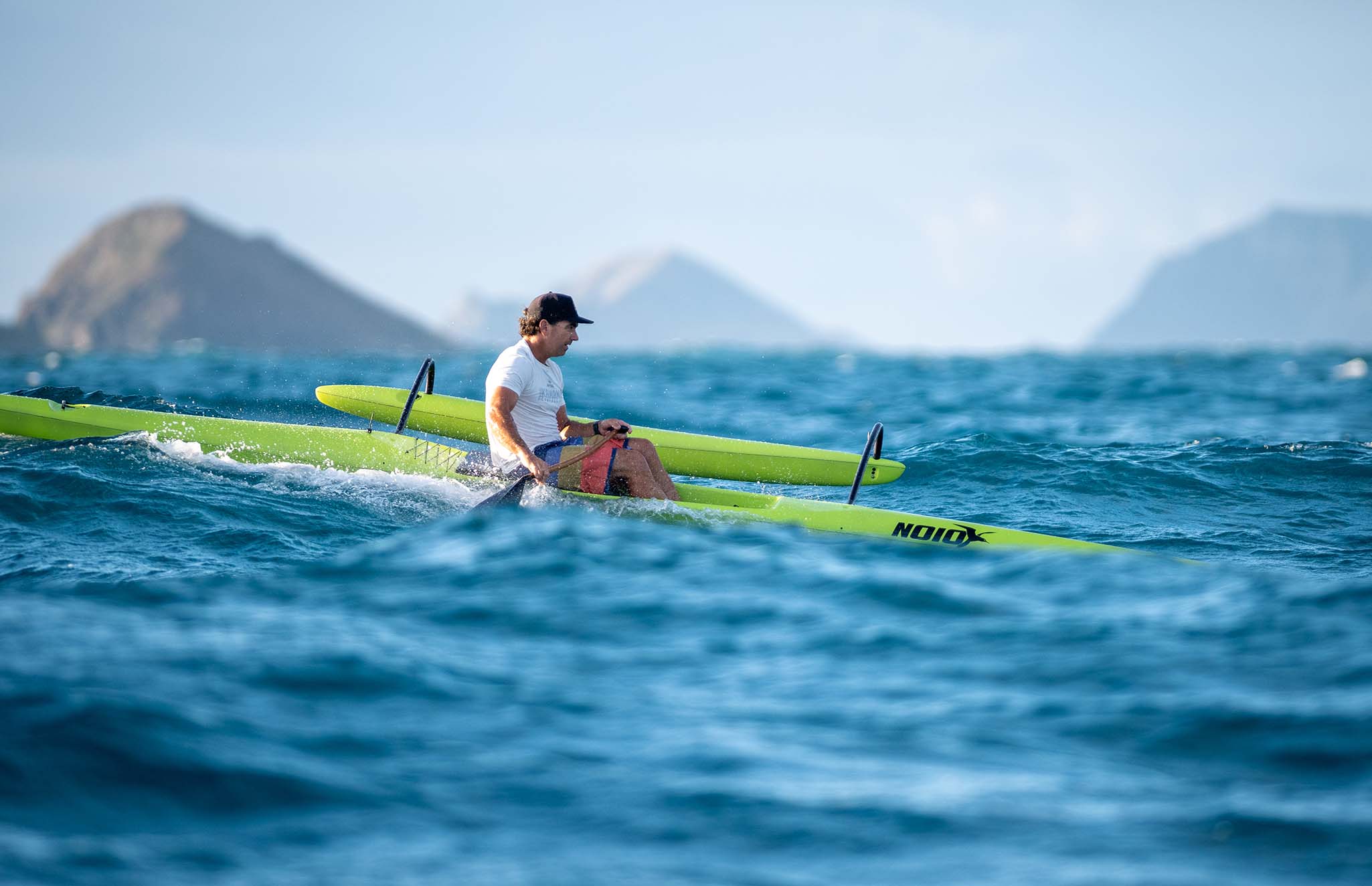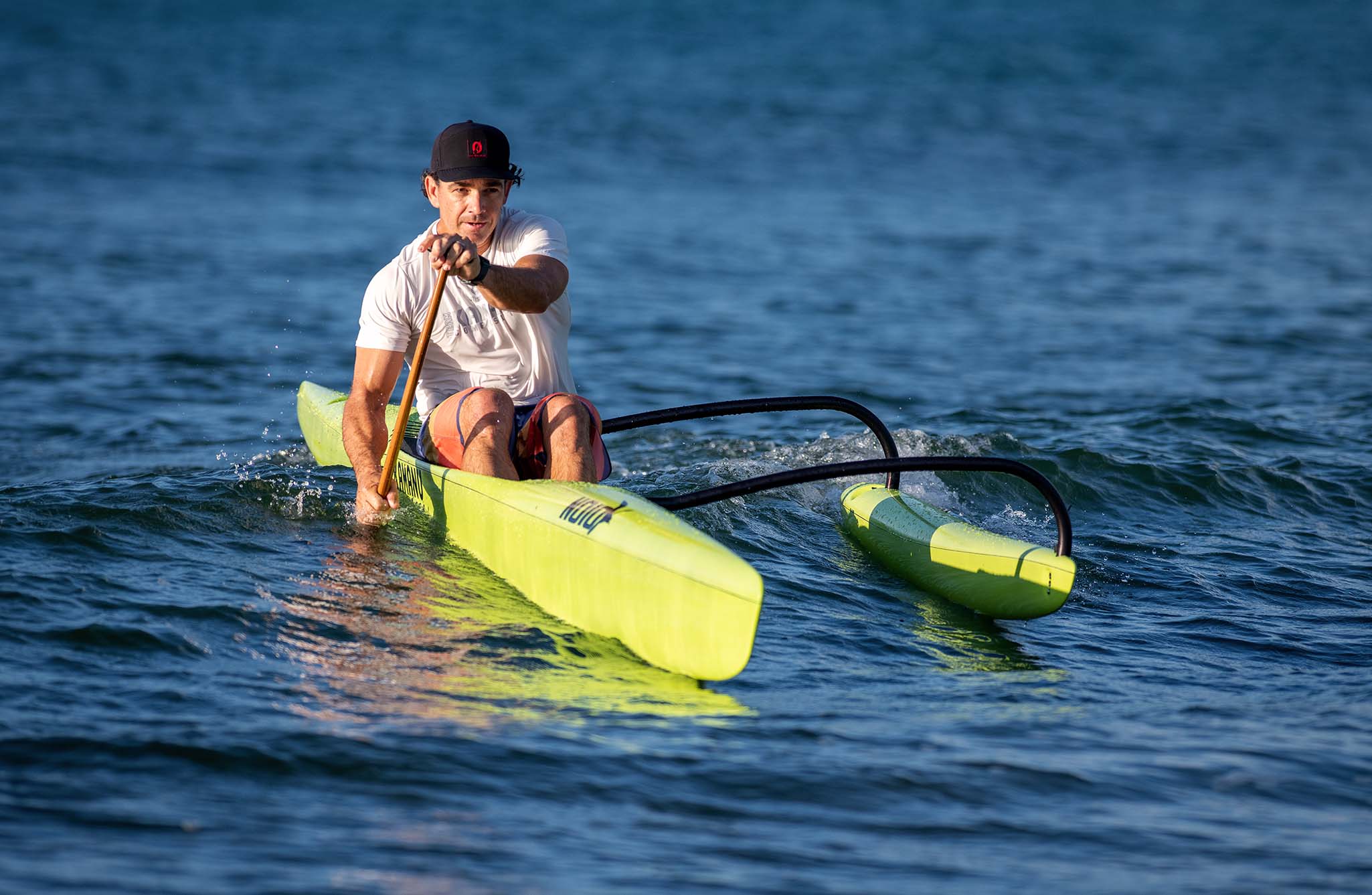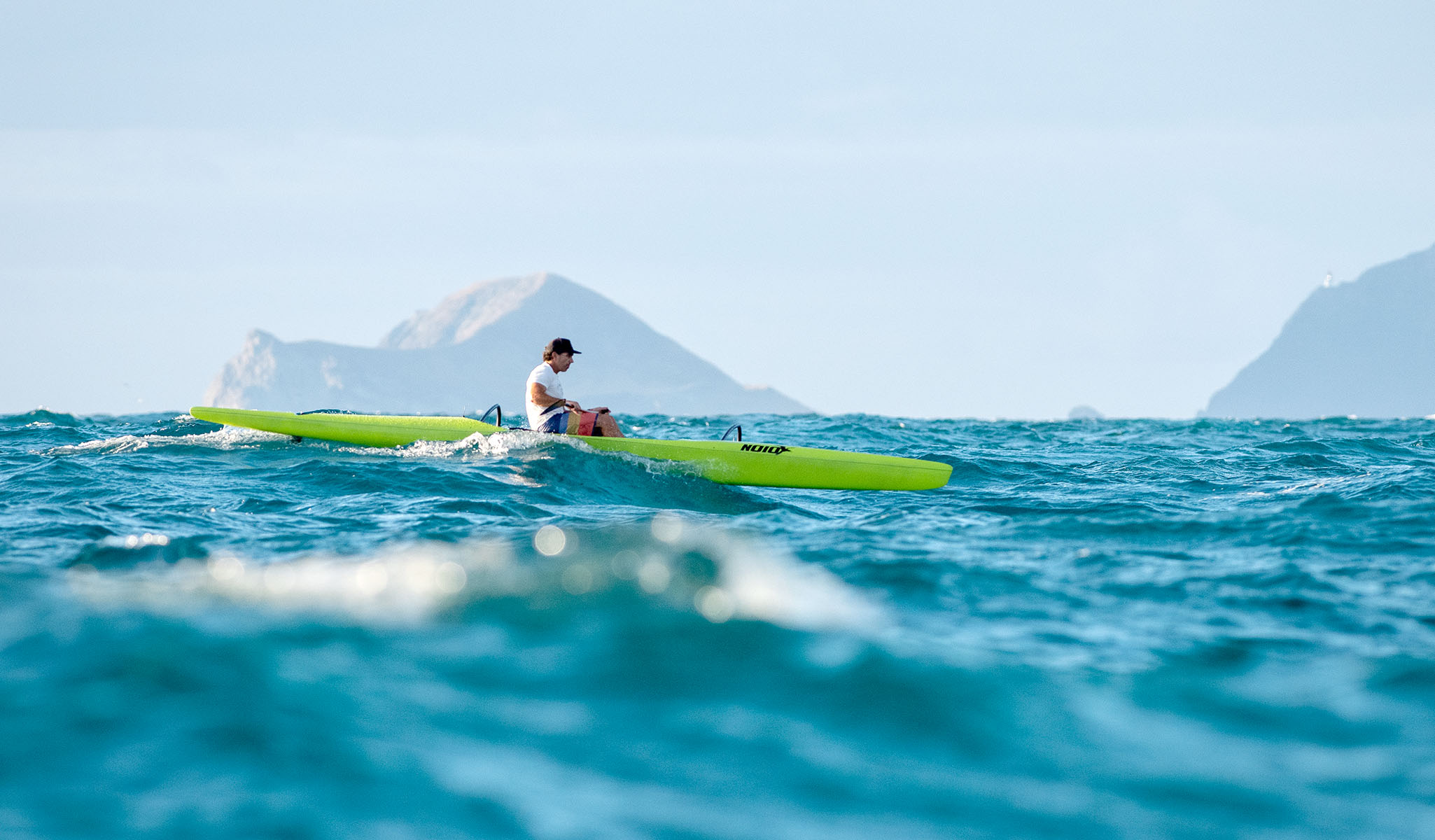Noio OC1 Canoe | Made in Hawai'i

The future is here
Designed & built in Hawai'i
Everything New
Everything Faster
Are you ready?




Noio
Noio is new in every way. A new hull shape, a new ama, and a new rudder. Everything redesigned. Everything faster.
Canoe design is iterative. And as canoes have gotten faster, improvements are increasingly hard to produce. For Noio, we drew upon years of paddling experience and observation. Then we pulled in every tool, technique, and process that could help. We invested significantly more in computational fluid dynamics (CFD) and experimental methods to squeeze out every last tenth of a percent of efficiency. Then we prototyped, tested, and got valuable feedback. Then we did it all over again. Finally, after more than three years, three prototypes, and hundreds of computerized iterations, Noio is here.
While Noio was under development, we went through a pandemic, rebuilt our manufacturing shop, and improved our entire approach to building canoes. We're super excited for the next era of Kamanu Composites, and we hope you are too.
The details
Hull design+
Our goal was to increase both efficiency and surfing performance. But, doing both is notoriously difficult– as there is often a clear tradeoff between surfing and efficiency. A shorter waterline can make a canoe fit in the trough and release better in the surf, but it will invariably slow the canoe down in flat water. And a longer waterline will almost always be more efficient, but it will negatively impact maneuverability and the ability to climb over bumps. Likewise, a wider hull can help in the surf while making the canoe less efficient in the flat, and a narrow canoe will be more efficient but won't release on a bump or be able to climb over waves. Given these inherent challenges, we needed to change a lot to make Noio faster in both the flat and the surf:
- The center of mass is moved backward to improve efficiency without impacting surf performance.
- The bow and stern are narrowed to reduce drag.
- The front third, and back quarter of the hull sections are slightly rectangular to increase maneuverability and responsiveness in the surf.
- The remaining sections are round to minimize surface area and maximize efficiency.
- The overall waterline width remains similar to a Pueo, which is narrower than most other competitors on the market. But, the max-width at the cockpit is 16 ⅜", which is wider than most canoes. The extra width helps carry the canoe into and over bumps.
The result is truly unique. The Noio is more efficient than a Pueo in flat water. The increased efficiency and extra width in the midsection increase surfing performance with an easier drop-in, better carry over the bump, and more maneuverability. We believe that we have met our goal to create the best all-around canoe in the world.
Ama
After the hull, we looked to the ama. In its day, the first-generation Pueo Ama changed the direction of all OC-1 outrigger canoe designs. And the second generation was a good iteration on that. For our third generation ama, we wanted to increase both efficiency and rough-water performance. Utilizing computational fluid dynamics, we designed and tested dozens of variations. We concluded that the only way to reduce drag significantly is to decrease the waterline width. To retain rough water performance, we moved volume above the waterline to keep the ama buoyant in the surf. We've tested it on the water extensively, and it might just be the best improvement we've made.
Ama design is also heavily tied to the canoe hull. Because Noio's center of buoyancy is significantly further back, we were also able to move the ama. Having the ama ride further back helps ensure that the front stays clear of the water without adding drag-inducing rocker. The new ama placement improves the ride nearly as much as the ama shape itself.
Rudder
Rudders are our most advanced process and most iterated designed part on our canoes. We've been really happy with our last design, other than the notorious humming. However, sometimes we still found ourselves wanting more control, experiencing an occasional rudder stall, and being annoyed by the random hum. We could fix those things by increasing the length, surface area, or thickness. But that would also add drag.
Enter tubercles. Nature knows best, and with more and more academic research on the hydrodynamics of whale fins, we took a close look. Tubercles, or bumps on the leading edge, keep flow attached more effectively, allowing for higher angles of attack without stalling. A rudder turns out to be a perfect application. We used tubercles to create a rudder with the same surface area as our previous design but with better control and no humming. Plus, it looks super rad.
The shop
As we redesigned a canoe, we also found ourselves redesigning our entire company -- from a new shop to new mold-making methods to new equipment. We've done it all.
We've set up a new manufacturing shop organized around a 4'x25' aerospace grade autoclave (pressurized oven), enabling us to improve the quality of laminates to a level never seen before in any canoe made in the USA. This is literally the same technology that's used for spaceships. It's absurd, really. But we're here to build the best canoes in the world, and innovation, technology, and continual improvement is what it takes.
Production
Starting in June 2022, we're producing Noio for customers in Hawai'i. Mainland and overseas shipment dates are to be announced later in the year. Early production, up to the first year or more, we'll be doing solid colors only or stock canoes. Fancy designs aren't going away, but we're hoping to increase the efficiency of our process without the complexity of super custom paint jobs. Most importantly, we need to scale our operation to a sustainable rate to ensure that the best canoes are made in Hawai'i indefinitely.
FAQ
What's the recommended weight for Noio?
We design for 120 lbs to 220 lbs. But as with previous designs, it's possible to push those boundaries by 20+ lbs in either direction. If you are above 200, let us know, and we can modify your 'iako to allow lower rigging options.
What height is ideal for Noio?
Our cockpit usually can accommodate 5' to 6'4" comfortably, and perhaps 2" in either direction beyond that is possible. However, performance is estimated to be best for people under 6'2" because we currently only have one footwell option. If you've above 6'2" or sit in a seat size larger than 32, we recommend testing and possibly waiting for an extended footwell Noio. We plan to build that option by mid-2023 to allow taller people to sit closer to the design center of buoyancy.
Is Noio for flat water or big ocean conditions?
It's for everything! We've used the most advanced design process ever applied to canoes to create a hull shape unlike anything else. As other designers try to optimize for conditions or paddler size – we continue to make what we want as paddlers. One canoe to go fast.
Is the ama compatible with a Pueo?
Yes, the new Generation 3 ama will work on the Gen 1 and Gen 2 Pueo. Generally speaking, the 'iako for our canoes should stay with the hull, but the ama can be changed.
Noio Features
- Beam Over All: 16 3/8"
- Length Over All: 20' 6"
- Hull Weight: 16-22 lbs
- Ama Weight: 4 lbs
- Anodized Aluminum Iakos
- Carbon Foot Pedals
- Stainless Steel Hardware
- Custom Foam Seat
- Rear Bungee Storage
- High Aspect Tubercle Surfing Rudder
- or Swept Weed Rudder
Layup Options
- Performance: 19-21 lbs*
- The deck has 4 oz carbon on the outside, a 1/8" foam core, and a 4 oz carbon on the inside. For added durability, the hull has two layers of 4.0oz S glass, a 1/8" foam core, and a 3.9 oz carbon on the inside. Recommended for customers where weight is a concern, but so is durability.
- Elite 16-19 lbs*
- The hull and deck have a 4 oz carbon on the outside, a 1/8" foam core, and a 4 oz carbon on the inside. With only one layer of carbon on the outside of the hull, the canoe will dent and possibly fracture easier with impact. It is our lightest lay-up, but also the most fragile. So it is recommended for customers who consider weight a major factor. Customers who are looking for the lightest canoe possible can purchase a Team canoe that only comes in solid grey but is guaranteed to weigh under 17.5 lbs.
- *Weight depends heavily on paint colors. We have a prediction tool when choosing colors.
Paint Options and Pricing
- All white: $5500
- Choice of ama color and decals.
- Simple: $5900
- Choice of colors on boat and ama.
- Complex or Team Paint: $6500
- All team gray can reduce weight to under 17.5 lbs (as low as 16 lb).
Full options and pricing are available on our store.
How to Buy
Questions?
Call us anytime (808) 228-8609, email info@kamanucomposites.com or reach out to one of our local reps listed below.
Local Reps
- Australia: Shon Siemonek
- Hong Kong/Singapore: Hong Kong
- Southern California: Corey Simpson
- Northern California: Ben McNeil
- Pacific Northwest: Alan Goto
Stock Canoe Email List
Subscribe if you want to be notified when stock canoes are available!




